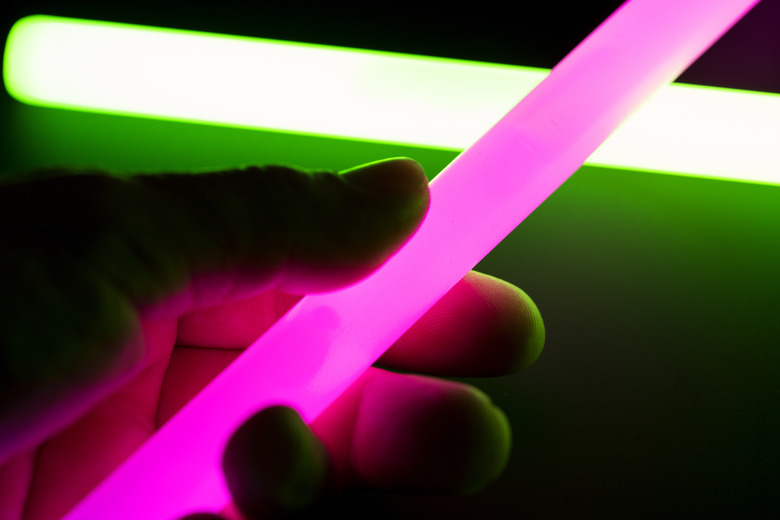Chemical Reactions That Produce Light
South American cucujo beetles glow so brightly that people can use them as lamps. Glow stick toys fascinate kids and adults by generating light without using any apparent power source. These are two examples of chemical reactions producing different types of illumination in living and non-living organisms.
Energy, Atoms and Light
Energy, Atoms and Light
The light you see begins at the atomic level. When energy excites electrons that orbit an atom, those electrons release photons after they return to their unexcited ground states. You see those photons as visible light. This principle applies to both a streetlamp glowing and a candle flickering in the wind. In a flashlight, a battery provides the power needed to trigger the light generation process. In a cucujo beetle, chemical reactions create the illumination.
Glowing Animal Chemistry
Glowing Animal Chemistry
Organisms such as fireflies are bioluminescent — they generate light by combining an enzyme with a substrate. Dinoflagellates, microscopic sea creatures, also produce their own light. When millions of them float together, they can illuminate the water as large, glowing swirls. The chemicals that organisms use to produce light vary depending on the species. It takes at least two chemicals to produce bioluminescence — a luciferin, which produces the light, and a luciferase, which drives the chemical reaction. Photoproteins use a slightly different mechanism from that of luciferase-luciferin systems, but that are nevertheless also enzymatic. An ion — often calcium — can start the light production process when it enters the system in some organisms.
Glow Stick Technology
Glow Stick Technology
It's possible to produce artificial bioluminescence by combining chemicals that generate light when you mix them in a container — this is what happens with a glow stick. These sticks often contain phenyloxylate ester, hydrogen peroxide and a fluorescent dye. When those chemicals combine, a series of reactions occur that cause energy to enter the dye. This energy excites the dye's electrons that release photon when they return to the ground state.
Light From Heat: A Festive Example
Light From Heat: A Festive Example
Independence Day is an excellent time to observe chemical reactions that produce light using heat. Many colorful fireworks that appear overhead shine because heat after an explosion causes metallic salts to absorb energy. When that happens, they emit visible light. The color you see depends on the metal or blend of metals in the firework. Strontium and lithium salts, for instance, produce red while copper compounds create blue.
Cite This Article
MLA
Lee, Kevin. "Chemical Reactions That Produce Light" sciencing.com, https://www.sciencing.com/chemical-reactions-produce-light-7394423/. 13 March 2018.
APA
Lee, Kevin. (2018, March 13). Chemical Reactions That Produce Light. sciencing.com. Retrieved from https://www.sciencing.com/chemical-reactions-produce-light-7394423/
Chicago
Lee, Kevin. Chemical Reactions That Produce Light last modified August 30, 2022. https://www.sciencing.com/chemical-reactions-produce-light-7394423/
